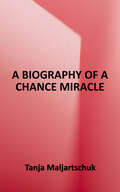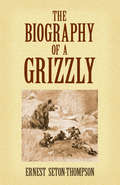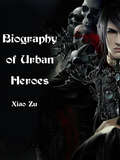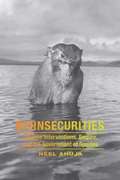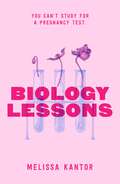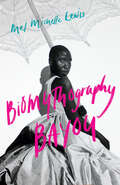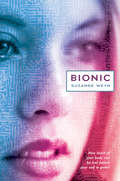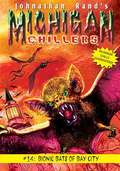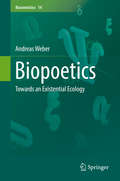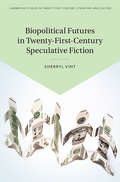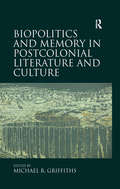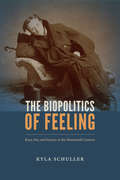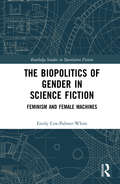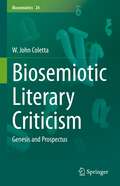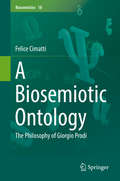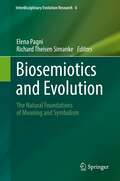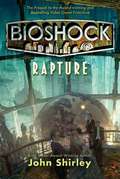- Table View
- List View
A Biography of a Chance Miracle
by Tanja MaljartschukA Biography of a Chance Miracle explores the life of Lena, a young girl growing up in the somewhat vapid, bureaucracy-ridden, and nationalistic Western Ukrainian city of San Francisco. Lena is a misfit from early childhood due to her unwillingness to scorn everything Russian, her propensity for befriending forlorn creatures, her aversion to the status quo, and her fear of living a stupid and meaningless life. As her friends enter college, Lena sets forth on a mission to defend the abused and downtrodden of San Francisco--be they canine or human--armed with nothing more than an arsenal of humor, stubbornness, chutzpah and no shortage of imagination. Her successes are minimal at best, but in the process of trying to save San Francisco's collective humanity, she may end up saving her own. At first glance a crazy and combative girl, Lena just may be the salvation that the Ukrainians of San Francisco sorely need. With haiku-like precision, Tanja's deceptively simple writing style blends surrealism and magical realism with satirical wit, occasionally outlandish humor and poignant social commentary. The German literary media has described her depictions of contemporary Ukraine as full of humor and absurdity, but "more exact and harsher" than those of her peers, comparing her to the 19th-century Russian satirist Saltykov-Shchedrin and hailing her as "a name to be remembered." This work, her most provocative to date, was a finalist for the 2012 BBC Book of the Year Award in Ukraine, and has been lauded as "simply ingenious" by fellow Ukrainian authors.
The Biography of a Grizzly: And 75 Drawings
by Ernest Seton-ThompsonThe only surviving member of his clan, Wahb the grizzly cub grows up alone in the Wyoming mountains, harboring anger and hatred for humans and other creatures that harmed him. As he develops into a full-grown grizzly, he becomes an unstoppable force whose former foes seem tiny in comparison. Wahb lives in peace with the other animals as well as the human visitors to Yellowstone National Park—until his dominance is challenged by another grizzly.Naturalist Ernest Thompson Seton was celebrated throughout Europe and the United States as a writer, lecturer, environmentalist, and co-founder of the Boy Scouts of America. He was also a gifted artist who illustrated most of his pioneering works of wildlife fiction, and this tale features 75 of his distinctive black-and-white images.
The Biography of J. R. R. Tolkien, Architect of Middle-Earth
by Daniel GrottaA biography of J.R.R. Tolkien, the author of the Lord of the Rings, The Hobbit, and many more!
Biography of Urban Heroes: Volume 1 (Volume 1 #1)
by Xiao ZuA person called dong zhenhong good at making the power of light group against the enemy a man named cai huancheng good at making short spears against the enemy a man called zhang ye fan wearing iron gloves good at holding a man named deng yiyong always had a broken knife in his hand a person called fan gigui always with a lot of spiritual charms a person called chen hongliang they practice a called nine reincarnation of the law spiritual strength is extremely deep these six people hate evil to help all the people who were oppressed by the black-robed man in each city the elimination of a black-robed person s strongholds the elimination of a black-robed person s forces people call them urban heroes in the rivers and lakes all people also believe that sooner or later urban heroes will eradicate the evil people in black robes creating a clear world
Biography of X: A Novel
by Catherine LaceyNamed a Best Book of March by Apple Books and Amazon, and a Most Anticipated Book by The New York Times, Esquire, The Guardian, TIME, Buzzfeed, Electric Literature, Lit Hub and Chicago Review of Books"A major novel, and a notably audacious one." —Dwight Garner, The New York Times "It feels fairly rare for a novel to be hugely intelligent and moving and fun in equal measure, but with Biography of X, Catherine Lacey somehow—magically—makes the nearly impossible look easy." —Lauren GroffFrom one of our fiercest stylists, a roaring epic chronicling the life, times, and secrets of a notorious artist.When X—an iconoclastic artist, writer, and polarizing shape-shifter—falls dead in her office, her widow, wild with grief and refusing everyone’s good advice, hurls herself into writing a biography of the woman she deified. Though X was recognized as a crucial creative force of her era, she kept a tight grip on her life story. Not even CM, her wife, knew where X had been born, and in her quest to find out, she opens a Pandora’s box of secrets, betrayals, and destruction. All the while, she immerses herself in the history of the Southern Territory, a fascist theocracy that split from the rest of the country after World War II, as it is finally, in the present day, forced into an uneasy reunification. A masterfully constructed literary adventure complete with original images assembled by X’s widow, Biography of X follows a grieving wife seeking to understand the woman who enthralled her. CM traces X’s peripatetic trajectory over decades, from Europe to the ruins of America's divided territories, and through her collaborations and feuds with everyone from Bowie and Waits to Sontag and Acker. And when she finally understands the scope of X’s defining artistic project, CM realizes her wife’s deceptions were far crueler than she imagined.Pulsing with suspense and intellect while blending nonfiction and fiction, Biography of X is a roaring epic that plumbs the depths of grief, art, and love. In her most ambitious novel yet, Catherine Lacey, one of our most acclaimed literary innovators, pushes her craft to its highest level, introducing us to an unforgettable character who, in her tantalizing mystery, shows us the fallibility of the stories we craft for ourselves.
Bioinsecurities: Disease Interventions, Empire, and the Government of Species
by Neel AhujaIn Bioinsecurities Neel Ahuja argues that U.S. imperial expansion has been shaped by the attempts of health and military officials to control the interactions of humans, animals, viruses, and bacteria at the borders of U.S. influence, a phenomenon called the government of species. The book explores efforts to control the spread of Hansen's disease, venereal disease, polio, smallpox, and HIV through interventions linking the continental United States to Hawai'i, Panamá, Puerto Rico, Cuba, Congo, Iraq, and India in the twentieth and twenty-first centuries. Ahuja argues that racial fears of contagion helped to produce public optimism concerning state uses of pharmaceuticals, medical experimentation, military intervention, and incarceration to regulate the immune capacities of the body. In the process, the security state made the biological structures of human and animal populations into sites of struggle in the politics of empire, unleashing new patient activisms and forms of resistance to medical and military authority across the increasingly global sphere of U.S. influence.
The Biological Bond
by Jamie DentonFourteen years ago, Rebecca Martinson heard the sweet cry of her newborn baby, but she never laid eyes on her child -- until now. Rebecca had been forced by her power-hungry father to send her child into adoption. Years later, single father Sam Winslow stormed into her world, stirring old emotions and sensual fantasies... and offering Rebecca the chance to give life to her daughter one more time. Keeping young Melanie alive meant bringing the beguiling birth mother into his home. But not for long! For Sam would never allow Rebecca to upset his ordered life. But Rebecca brought unyielding joy to their daughter -- and a fire to his soul. Could it be that in saving his child, Sam had found a way to save his heart?
Biology: God's Living Creation (3rd Edition)
by Keith Graham Gregory ParkerThis textbook is unique--different from any other biology text in print today. The study of life is presented in a traditional manner as it was discovered by the great naturalists of the past, a large majority of whom revered the biblical account of Creation. Unlike other texts, which begin by confusing students with intangible, unseen, and theoretical topics such as biochemistry, subcellular structure, genetics, and philosophy, Biology: God's Living Creation motivates students to learn by first presenting the living world around them, the things they can see, touch, and identify.
Biology Lessons
by Melissa KantorBiology Lessons is a heartfelt and profound contemporary young adult novel about the strength and importance of female friendship in a time when bodily autonomy is outlawed, from acclaimed author Melissa Kantor."This is a book that Judy Blume would approve of." —BCCBGrace Williams has her future all mapped out. A high school senior in her beloved state of Texas, Grace plans to move to New York City after graduation to study at Barnard College, and maybe, someday, win a Nobel Prize in biology. When she's asked to tutor Jack Nelson, the star baseball player who's flunking bio, she thinks it'll be just another activity to list on her college application. Studying turns to flirting, flirting becomes secret hookups, and despite her expertise in bio, Grace gets pregnant. In a state where abortion is illegal, with parents who would expect her to keep the baby, Grace’s future is over before it’s begun.With no one else to turn to, Grace must rely on her best friends, Addie and Sebastian, but antiabortion laws put anyone who helps Grace in grave danger, and anyone they encounter might be an informant. When Grace finds a phone number and an offer of help scrawled in a bathroom stall, the three friends hatch a plan to sneak Grace across state lines. The risks to people she loves and those who have befriended her terrify Grace, but with Addie and Sebastian by her side, at least she isn't alone.A love letter to hometowns, New York City, and infinite possibilities, Biology Lessons showcases the transformative power of friendship in a world where choice is something you have to fight for.
Biomythography Bayou (The Griot Project Book Series)
by Mel Michelle LewisWhen your stories flow from the brackish waters of the Gulf South, where the land and water merge, your narratives cannot be contained or constrained by the Eurocentric conventions of autobiography. When your story is rooted in the histories of your West African, Creek, and Creole ancestors, as well as your Black, feminist, and queer communities, you must create a biomythography that transcends linear time and extends beyond the pages of a book. Biomythography Bayou is more than just a book of memoir; it is a ritual for conjuring queer embodied knowledges and decolonial perspectives. Blending a rich gumbo of genres—from ingredients such as praise songs, folk tales, recipes, incantations, and invocations—it also includes a multimedia component, with “bayou tableau” images and audio recording links. Inspired by such writers as Audre Lorde, Zora Neale Hurston, and Octavia Butler, Mel Michelle Lewis draws from the well of her ancestors in order to chart a course toward healing Afrofutures. Showcasing the nature, folklore, dialect, foodways, music, and art of the Gulf’s coastal communities, Lewis finds poetic ways to celebrate their power and wisdom.
Biondo Scuro
by David H Fears Giulia CaselliniJulia Gateswood assume il riluttante investigatore privato Mike Angel, per trovare la sorella scomparsa. Ma la sua posizione sociale e il sordido passato della sorella non rendono le cose facili. Julia è un ex reginetta di bellezza che ha sposato per interesse il deputato Henry Gateswood, un carismatico professore universitario candidato per l'Illinois alle elezioni del Senato del 1962. Quando Gail, una donna liberale con dei legami con loschi individui e la sorella di Julia scompare, chiama l'investigatore privato Mike Angel, che scopre da subito che la sua datrice di lavoro non è quella che appare, ma è senza dubbio in grado di far scattare la sua libido. Prima che Mike entri nel vivo del caso, gli fa visita la stramba segretaria di Julia. Le due troveranno il corpo senza testa della sorella scomparsa nell'appartamento degli ospiti della residenza dei Gateswood. Mike e il suo partner non ufficiale, Rick Anthony, un veterano di guerra e poliziotto a New York per venticinque anni, il cui vocabolario è influenzato da troppe lezioni universitarie, giungono sulla scena del crimine prima della polizia e seguono degli indizzi che li porteranno a dei pericolosi mafiosi di Chicago.
Bionic (Scholastic Press Novels)
by Suzanne WeynMira has always almost had it all... until it all crashes and burns. She's hurt in a horrible car accident, and the only way the doctors can help is to try experimental prosthetics and chips that are implanted directly into her brain. It's a huge risk, but after months of testing and therapy, Mira is back, and better than ever. But soon her friends turn against her as their parents call her on unfair advantages and get her cut from lacrosse and the scholarships she was depending on for college. And with her enhanced hearing, she knows how many people in her school and her town are calling her a robot, a cyborg. Is that true? Is Mira human, or is she somehow something other? How can she overcome the ways people see her and just be herself... especially if she's not really sure who that is anymore? Suzanne Weyn is always at the cutting edge when it comes to new tech and the questions it raises about the world we live in.
Bionic Bats of Bay City (Michigan Chillers #14)
by Johnathan RandMICHIGAN CHILLERS WINGED MONSTERS ATTACK AN ENTIRE CITY! On a dark night in Bay City, Michigan, friends gather to plan an innocent game of hide-and-seek. However, just as they begin to play, one of them sees a bat. But it's not any ordinary bat. In fact, the bat is gigantic--as big as some of the children! And there's more than one. Forced to abandon their game, five children must flee the vicious attacks of these giant creatures from the sky. Unable to take refuge in their homes, they must fight to survive. Where did these bats come from? How on earth did they grow to such enormous size? And most important: will the five children be able to defend themselves until help arrives, or will the bats have their way? It's a night of horror in Bay City . . . and for five friends, it just might be their last night alive! #14: Bionic Bats of Bay City by Johnathan Rand
Biopoetics: Towards an Existential Ecology (Biosemiotics #14)
by Andreas WeberMeaning, feeling and expression - the experience of inwardness - matter most in human existence. The perspective of biopoetics shows that this experience is shared by all organisms. Being alive means to exist through relations that have existential concern, and to express these dimensions through the body and its gestures. All life takes place within one poetic space which is shared between all beings and which is accessible through subjective sensual experience. We take part in this through our empirical subjectivity, which arises from the experiences and needs of living beings, and which makes them open to access and sharing in a poetic objectivity. Biopoetics breaks free from the causal-mechanic paradigm which made biology unable to account for mind and meaning. Biology becomes a science of expression, connection and subjectivity which can understand all organisms including humans as feeling agents in a shared ecology of meaningful relations, embedded in a symbolical and material metabolism of the biosphere.
Biopolitical Futures in Twenty-First-Century Speculative Fiction (Cambridge Studies in Twenty-First-Century Literature and Culture)
by Sherryl VintDrawing on a rich array of twenty-first-century speculative fiction, this book demonstrates how the commodification of life through biotechnology has far-reaching implications for how we think of personhood, agency, and value. Sherryl Vint argues that neoliberalism is reinventing life under biocapital. She offers new biopolitical figurations that can help theoretically grasp and politically respond to a distinctive twenty-first-century biopolitics. This book theorizes how biotechnology intervenes in the very processes of biological function, reshaping life itself to serve economic ends. Linking fictional texts with material examples, Biopolitical Futures in Twenty-First-Century Speculative Fiction shows how these practices are linked to new modes of exploitative economic relations that cannot be redressed by human rights. It concludes with a posthumanist reframing of the value of life that grounds itself elsewhere than in capitalist logics, a vision that, in a Covid age, might become fundamental to a new politics of ecological relations.
Biopolitics and Memory in Postcolonial Literature and Culture
by Michael R. GriffithsFrom the Truth and Reconciliation Commission in South Africa to the United Nations Permanent Memorial to the Victims of Slavery and the Transatlantic Slave Trade, many worthwhile processes of public memory have been enacted on the national and international levels. But how do these extant practices of memory function to precipitate justice and recompense? Are there moments when such techniques, performances, and displays of memory serve to obscure and elide aspects of the history of colonial governmentality? This collection addresses these and other questions in essays that take up the varied legacies, continuities, modes of memorialization, and poetics of remaking that attend colonial governmentality in spaces as varied as the Maghreb and the Solomon Islands. Highlighting the continued injustices arising from a process whose aftermath is far from settled, the contributors examine works by twentieth-century authors representing Asia, Africa, North America, Latin America, Australia, and Europe. Imperial practices throughout the world have fomented a veritable culture of memory. The essays in this volume show how the legacy of colonialism’s attempt to transform the mode of life of colonized peoples has been central to the largely unequal phenomenon of globalization.
The Biopolitics of Childhood in the Long American 19th Century (Children's Literature and Culture)
by Lucia Hodgson Allison GiffenThis edited collection contends that the figure of the child is foundational to the workings of biopolitical power yet remains undertheorized. The study of nineteenth-century biopolitics offers a theoretical framework that promises to increase our understanding of how modern democracies manage their subjects. Recent scholarship has invigorated interrogations into forms of state governance that operate at the level of population, a biological phenomenon defined as a group of individuals linked by racialized fictions of biological commonality. This collection seeks to recognize and position critical childhood studies as essential to these interrogations. The essays theorize the role of representations of children and childhood as tools of biopolitical governance in America in the long nineteenth century. They variously explore how the interrelated and overlapping qualities integral to our understandings of the child and childhood are readily deployed by biopolitical power. The collection is organized into three sections that illustrate how these qualities enable the sorting of human beings into populations targeted for reform, exploitation, and disposal.
The Biopolitics of Feeling: Race, Sex, and Science in the Nineteenth Century
by Kyla SchullerIn The Biopolitics of Feeling Kyla Schuller unearths the forgotten, multiethnic sciences of impressibility—the capacity to be transformed by one's environment and experiences—to uncover how biopower developed in the United States. Schuller challenges prevalent interpretations of biopower and literary cultures to reveal how biopower emerged within the discourses and practices of sentimentalism. Through analyses of evolutionary theories, gynecological sciences, abolitionist poetry and other literary texts, feminist tracts, child welfare reforms, and black uplift movements, Schuller excavates a vast apparatus that regulated the capacity of sensory and emotional feeling in an attempt to shape the evolution of the national population. Her historical and theoretical work exposes the overlooked role of sex difference in population management and the optimization of life, illuminating how models of binary sex function as one of the key mechanisms of racializing power. Schuller thereby overturns long-accepted frameworks of the nature of race and sex difference, offers key corrective insights to modern debates surrounding the equation of racism with determinism and the liberatory potential of ideas about the plasticity of the body, and reframes contemporary notions of sentiment, affect, sexuality, evolution, and heredity.
The Biopolitics of Gender in Science Fiction: Feminism and Female Machines (Routledge Studies in Speculative Fiction)
by Emily Cox-Palmer-WhiteQuestioning essentialist forms of feminist discourse, this work develops an innovative approach to gender and feminist theory by drawing together the work of key feminist and gender theorists, such as Judith Butler and Donna Haraway, and the biopolitical philosophy of Giorgio Agamben and Gilles Deleuze. By analysing representations of the female cyborg figure, the gynoid, in science fiction literature, television, film and videogames, the work acknowledges its normative and subversive properties while also calling for a new feminist politics of selfhood and autonomy implied by the posthuman qualities of the female machine.
Bios (Gateway Essentials #276)
by Robert Charles WilsonIt is the 22nd century. Interstellar travel is possible, but colossally expensive, so humankind's efforts are focused on the only nearby Earth-like world. Isis is rich with plant and animal life, but every molecule of it is spectacularly toxic to humans. The whole planet is a permanent Hot Zone.Zoe Fisher was born to explore Isis. Literally. She has been cloned and genetically engineered to face its terrors. But there are secrets implanted within her that not even she suspects - and the planet itself contains revelations that will change our understanding of life in the universe.
Biosemiotic Literary Criticism: Genesis and Prospectus (Biosemiotics #24)
by W. John ColettaThis volume is based to a large extent on the understanding of biosemiotic literary criticism as a semiotic-model-making enterprise. For Jurij Lotman and Thomas A. Sebeok, “nature writing is essentially a model of the relationship between humans and nature” (Timo Maran); biosemiotic literary criticism, itself a form of nature writing and thus itself an ecological-niche-making enterprise, will be considered to be a model of modeling, a model of nature naturing. Modes and models of analysis drawn from Thomas A. Sebeok and Marcel Danesi’s Forms of Meaning: Modeling Systems Theory and Semiotic Analysis as well as from Timo Maran’s work on “modeling the environment in literature,” Edwina Taborsky’s writing on Peircean semiosis, and, of course, Jesper Hoffmeyer’s formative work in biosemiotics are among the most important organizing elements for this volume.
A Biosemiotic Ontology: The Philosophy of Giorgio Prodi (Biosemiotics #18)
by Felice CimattiGiorgio Prodi (1928-1987) was an important Italian scientist who developed an original philosophy based on two basic assumptions: 1. life is mainly a semiotic phenomenon; 2. matter is somewhat a semiotic phenomenon.Prodi applies Peirce's cenopythagorean categories to all phenomena of life and matter: Firstness, Secondness, and Thirdness. They are interconnected meaning that the very ontology of the world, according to Prodi, is somewhat semiotic. In fact, when one describes matter as “made of” Firstness and Secondness, this means that matter ‘intrinsically’ implies semiotics (with Thirdness also being present in the world).At the very heart of Prodi’s theory lies a metaphysical hypothesis which is an ambitious theoretical gesture that places Prodi in an awkward position with respect to the customary philosophical tradition. In fact, his own ontology is neither dualistic nor monistic. Such a conclusion is unusual and weird, but much less unusual in present time than it was when it was first introduced. The actual resurgence of various “realisms” make Prodi’s semiotic realism much more interesting than when he first proposed his philosophical approach. What is uncommon, in Prodi perspective, is that he never separated semiotics from the materiality of the world. Prodi does not agree with the “standard” structuralist view of semiosis as an artificial and unnatural activity. On the contrary, Prodi believed semiosis (that is, the interconnection between Firstness, Secondness and Thirdness) lies at the very bottom of life. On one hand, Prodi maintains a strong realist stance; on the other, a realism that includes semiosis as ‘natural’ phenomena. This last view is very unusual because all forms, more or less, of realism exclude semiosis from nature but they frequently “reduce” semiosis to non-semiotic elements. According to Prodi, semiosis is a completely natural phenomenon.
Biosemiotics and Evolution: The Natural Foundations of Meaning and Symbolism (Interdisciplinary Evolution Research #6)
by Elena Pagni Richard Theisen SimankeThis book reviews the evolution of Biosemiotics and gives an outlook on the future of this interdisciplinary new discipline. In this volume, the foundations of symbolism are transformed into a phenomenological, technological, philosophical and psychological discussion enriching the readers’ knowledge of these foundations. It offers the opportunity to rethink the impact that evolution theory and the confirmations about evolution as a historical and natural fact, has had and continues to have today. The book is divided into three parts:Part I Life, Meaning, and InformationPart II Semiosis and EvolutionPart III Physics, medicine, and bioenergetics It starts by laying out a general historical, philosophical, and scientific framework for the collection of studies that will follow. In the following some of the main reference models of evolutionary theories are revisited: Extended Synthesis, Formal Darwinism and Biosemiotics. The authors shed new light on how to rethink the processes underlying the origins and evolution of knowledge, the boundary between teleonomic and teleological paradigms of evolution and their possible integration, the relationship between linguistics and biological sciences, especially with reference to the concept of causality, biological information and the mechanisms of its transmission, the difference between physical and biosemiotic intentionality, as well as an examination of the results offered or deriving from the application in the economics and the engineering of design, of biosemiotic models for the transmission of culture, digitalization and proto-design. This volume is of fundamental scientific and philosophical interest, and seen as a possibility for a dialogue based on theoretical and methodological pluralism. The international nature of the publication, with contributions from all over the world, will allow a further development of academic relations, at the service of the international scientific and humanistic heritage.
BioShock: Rapture
by John ShirleyConsidered to be one of the finest games in the history of interactive entertainment, "BioShock" features fascinating characters, intelligent enemies, and complex moral choices. For the first time, this amazingly complex and frightening world is explored in novel form.
Biostrike (Tom Clancy's Power Plays #4)
by Tom Clancy Jerome Preisler Martin H. GreenbergA new strain of mass destruction...<P> The most dangerous man of this century has employed the most dangerous weapon yet. Criminal mastermind Harlan DeVane has developed -- and spread -- a deadly, genetically engineered "superbug" resistant to all known cures. A microscopic time bomb, it will lie dormant inside its human hosts until detonated by specific biochemical triggers.<P> DeVane plans to auction off the triggering elements to the highest bidder, but first he'll use them to destroy the greatest threat to his operation: Roger Gordian, head of UpLink Technologies. As Roger falls prey to the disease, his medical and intelligence teams race to find the cause and the cure -- because in Roger's fate lies the fate of the world...
